The automotive market is constantly evolving, with manufacturers race to innovate and produce cars that balance performance, design, and practicality. In this comparison, we delve into two noteworthy contenders: the MG HS and the Dacia Bigster. Both SUVs offer distinct features and specifications, appealing to different tastes and needs among consumers.
MG HS vs Dacia Bigster – Różnice i ceny w porównaniu
Oba modele mają swoje mocne strony – ale który lepiej pasuje do Ciebie?
Porównaj bezpośrednio osiągi, zużycie, cenę i przestrzeń: MG HS czy Dacia Bigster?
Design and Dimensions
The MG HS, with its sleek and modern styling, boasts a length of 4655 mm and a width of 1890 mm. This spacious exterior is complemented by a height of 1664 mm, providing a commanding presence on the road. On the other hand, the Dacia Bigster measures 4570 mm in length and 1813 mm in width, standing slightly taller at 1705 mm. Although the Bigster has a compact design, its boxy shape offers ample headroom and cargo space, making it a practical choice for families.
Performance and Powertrain
When it comes to performance, the MG HS stands out with various engine options. It offers both petrol and plug-in hybrid configurations, with horsepower ranging from 170 to a robust 272 HP. The HS also delivers impressive torque figures of up to 350 Nm and acceleration from 0 to 100 km/h in as little as 6.8 seconds. In contrast, the Dacia Bigster operates with a range of petrol, mild-hybrid, and LPG engines, producing between 130 and 155 HP. Its acceleration from 0 to 100 km/h varies from 9.7 to 11.2 seconds, which, while less vigorous than the HS, still presents a capable performance for daily driving.
Fuel Efficiency and Environmental Impact
Fuel efficiency is a crucial consideration for many buyers. The MG HS records a fuel consumption of approximately 7.4 L/100 km for its petrol versions and an extremely low 0.5 L/100 km for the plug-in hybrid variant, achieving a CO2 emission rating between 168 to 173 g/km. Conversely, the Dacia Bigster impresses prospective drivers with a more economical range, consuming as little as 4.7 L/100 km in its most efficient configurations and showcasing CO2 emissions of just 106 g/km. This unmistakably positions it as a greener option compared to its MG rival.
Interior and Comfort Features
Inside, the MG HS offers a refined cabin experience, equipped to seat up to five passengers comfortably. The trunk capacity of the HS varies between 441 to 507 liters, allowing flexibility for cargo. The Dacia Bigster, however, takes the lead in interior space with a trunk capacity ranging from 546 to an impressive 667 liters, catering to the needs of larger families or those who frequently transport goods. Both vehicles come with modern amenities and smart technology, although the HS may appeal more to tech-savvy buyers with its advanced infotainment system.
Safety and Advanced Features
The MG HS comes fortified with numerous safety features, including adaptive cruise control, lane-keeping assist, and a comprehensive suite of airbags. Dacia’s Bigster also emphasizes safety with its robust structure and features like automatic emergency braking. In terms of driver assistance technologies, the HS may have more advanced options, making it a great choice for those prioritizing a high-tech safety suite.
Conclusion
In conclusion, the comparison between the MG HS and the Dacia Bigster highlights two distinct approaches to the SUV market. The MG HS leans towards performance and tech-savvy features, appealing to drivers looking for an engaging driving experience and modern aesthetics. In contrast, the Dacia Bigster emphasizes practicality, fuel efficiency, and space, making it well-suited for those prioritizing family needs and economical driving. Ultimately, prospective buyers should consider their preferences and requirements to make an informed decision that best fits their lifestyle.
Szczegóły techniczne: konkretne różnice między modelami
Kto zostaje zwycięzcą?
Podsumowując, Dacia Bigster jest ledwie z przodu i zasługuje na tytuł DriveDuel Champion.
Oferuje lepszy, bardziej zrównoważony pakiet i jest praktyczniejszym towarzyszem na co dzień.
 @ Dacia / Renault Group Media
@ Dacia / Renault Group Media
Dacia Bigster
MG HS
MG HS to przestronny i stylowy SUV, który kusi bogatym wyposażeniem za rozsądne pieniądze i bez kompleksów mierzy się z konkurencją. Jazda nim jest wygodna i przewidywalna, a wnętrze ma przyjemny charakter — idealny wybór dla tych, którzy chcą ładnego i praktycznego auta bez zbędnych fajerwerków.
szczegóły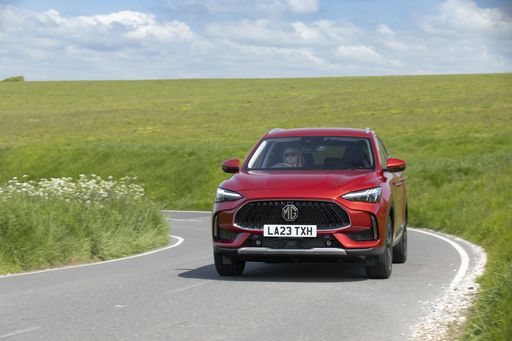 @ MG Motor / SAIC Motor Corporation
@ MG Motor / SAIC Motor Corporation
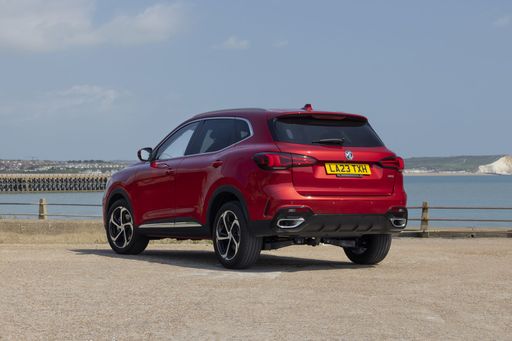 @ MG Motor / SAIC Motor Corporation
@ MG Motor / SAIC Motor Corporation
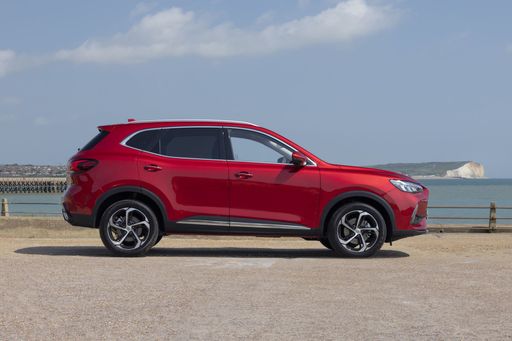 @ MG Motor / SAIC Motor Corporation
@ MG Motor / SAIC Motor Corporation
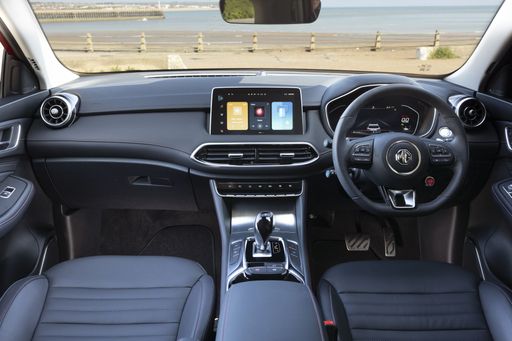 @ MG Motor / SAIC Motor Corporation
@ MG Motor / SAIC Motor Corporation
Dacia Bigster
Dacia Bigster to SUV, który stawia na praktyczność i rozsądek — prosty w obsłudze, przestronny i z charakterem, który nie udaje więcej niż jest wart. Dla osób szukających sensownego kompromisu między ceną a funkcjonalnością to solidna propozycja, która nie sili się na luksus, za to chętnie zabierze rodzinę i bagaże tam, gdzie trzeba.
szczegóły @ Dacia / Renault Group Media
@ Dacia / Renault Group Media
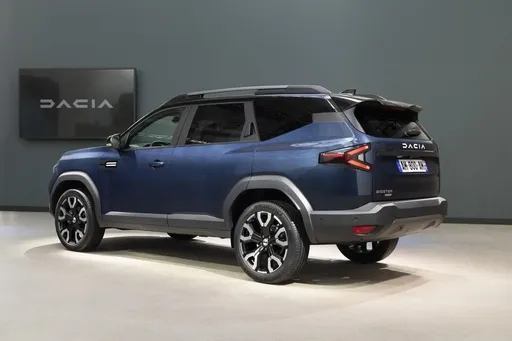 @ Dacia / Renault Group Media
@ Dacia / Renault Group Media
 @ Dacia / Renault Group Media
@ Dacia / Renault Group Media
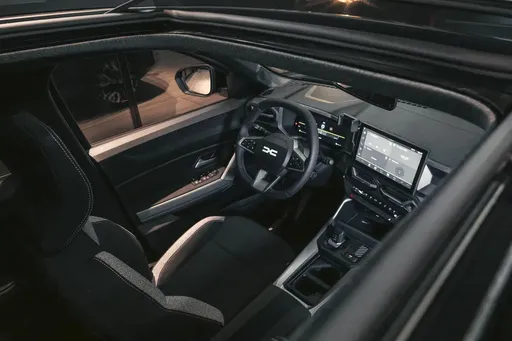 @ Dacia / Renault Group Media
@ Dacia / Renault Group Media
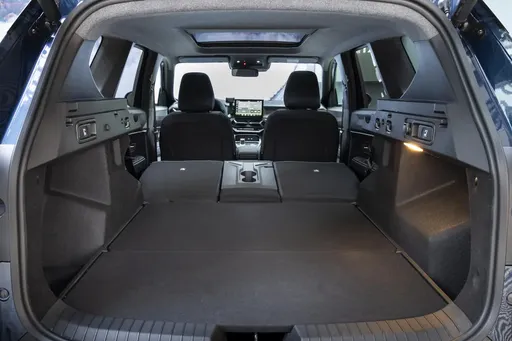 @ Dacia / Renault Group Media
@ Dacia / Renault Group Media
 @ MG Motor / SAIC Motor Corporation
@ MG Motor / SAIC Motor Corporation
|
 @ Dacia / Renault Group Media
@ Dacia / Renault Group Media
|
|
|
|
Koszty i Zużycie |
|
|---|---|
|
Cena
-
|
Cena
105400 - 136100 zł
|
|
Zużycie L/100km
-
|
Zużycie L/100km
4.7 - 7.1 L
|
|
Zużycie kWh/100km
-
|
Zużycie kWh/100km
-
|
|
Zasięg elektryczny
-
|
Zasięg elektryczny
-
|
|
Pojemność baterii
-
|
Pojemność baterii
-
|
|
CO2
-
|
CO2
106 - 137 g/km
|
|
Pojemność zbiornika paliwa
-
|
Pojemność zbiornika paliwa
50 - 55 L
|
Wymiary i Nadwozie |
|
|---|---|
|
Typ nadwozia
-
|
Typ nadwozia
SUV
|
|
Miejsca siedzące
-
|
Miejsca siedzące
5
|
|
Drzwi
-
|
Drzwi
5
|
|
Masa własna
-
|
Masa własna
1425 - 1547 kg
|
|
Pojemność bagażnika
-
|
Pojemność bagażnika
510 - 667 L
|
|
Długość
-
|
Długość
4570 mm
|
|
Szerokość
-
|
Szerokość
1813 mm
|
|
Wysokość
-
|
Wysokość
1705 mm
|
|
Maksymalna pojemność bagażnika
-
|
Maksymalna pojemność bagażnika
1813 - 1937 L
|
|
Ładowność
-
|
Ładowność
383 - 467 kg
|
Silnik i Wydajność |
|
|---|---|
|
Typ silnika
-
|
Typ silnika
Mild Hybrid Benzyna, Pełna Hybryda, LPG
|
|
Skrzynia biegów
-
|
Skrzynia biegów
Manuel, Automatyczna
|
|
Szczegóły skrzyni biegów
-
|
Szczegóły skrzyni biegów
Manualna skrzynia biegów, Zautomatyzowana manualna
|
|
Rodzaj napędu
-
|
Rodzaj napędu
Napęd na cztery koła, Napęd na przednie koła
|
|
Moc KM
-
|
Moc KM
130 - 155 KM
|
|
Przyspieszenie 0-100km/h
-
|
Przyspieszenie 0-100km/h
9.7 - 11.2 s
|
|
Maksymalna prędkość
-
|
Maksymalna prędkość
180 km/h
|
|
Moment obrotowy
-
|
Moment obrotowy
230 Nm
|
|
Liczba cylindrów
-
|
Liczba cylindrów
3 - 4
|
|
Moc kW
-
|
Moc kW
96 - 115 kW
|
|
Pojemność silnika
-
|
Pojemność silnika
1199 - 1799 cm3
|
Ogólne |
|
|---|---|
|
Rok modelowy
-
|
Rok modelowy
2025
|
|
Klasa efektywności CO2
-
|
Klasa efektywności CO2
E, D, C
|
|
Marka
-
|
Marka
Dacia
|
Jakie rodzaje napędu ma Dacia Bigster?
Dostępne wersje obejmują Napęd na cztery koła albo Napęd na przednie koła.
Wyświetlane ceny i dane są szacunkowe, oparte na niemieckich cenach katalogowych i mogą się różnić w zależności od kraju. Te informacje nie stanowią wiążącej oferty.
